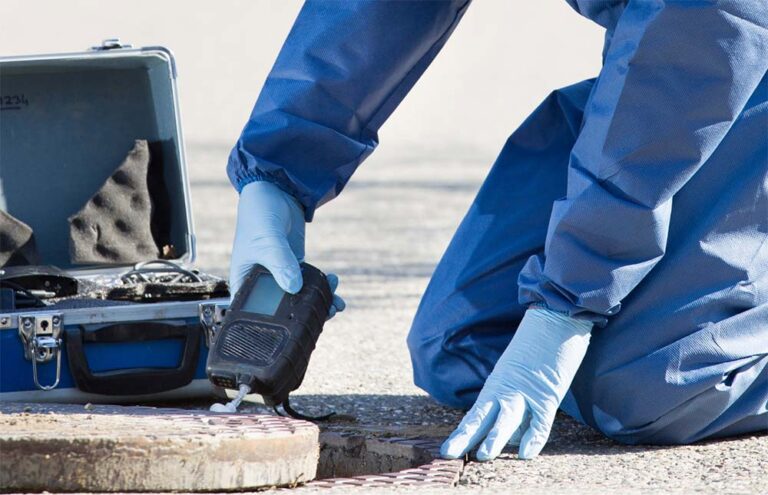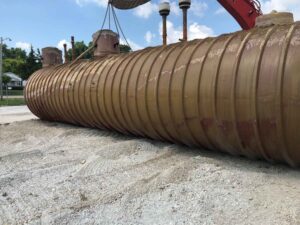Ambient air sampling is a crucial aspect of understanding and monitoring the air quality in a given area. Whether you are a government agency, a business, or an individual concerned about the air you and your community are breathing, ambient air sampling can provide valuable information about the presence and levels of various pollutants in the air.
Ambient air sampling involves collecting air samples from a specific location and analyzing them to determine the concentrations of various pollutants. This allows us to understand the air quality at that location and identify any potential health or environmental risks.
In this blog, we will cover the basics of ambient air sampling procedures, including planning the sampling campaign, setting up the sampling equipment, collecting and analyzing the samples, and interpreting and using the results. By understanding these steps, you can make informed decisions about air pollution control measures and ensure the air you and your community are breathing is as clean and safe as possible.
What are Air Sampling Procedures
Air sampling procedures can be used to detect and monitor the presence of airborne contaminants. These can include particles, gases, and vapors. Vapors are evaporation products of liquid compounds, and aerosols are emitted from a gas.
Choosing the appropriate method for air sampling requires consideration of several factors. Some of the variables that can impact the outcome of the test include the sampling rate, type of sampler, environmental factors, and concentration of microorganisms.
There are two main types of air sampling procedures: passive and active. Passive methods rely on the diffusion of gases in an enclosed area. In order to collect a larger volume of air in a short amount of time, these devices are usually employed.
Active methods require the use of a pumping device. In addition to the flow control devices, the air sampled will be analyzed for the concentration of the desired gas. Flow controllers are generally pre-calibrated for a 1-hour or 8-hour period.
For air sampling, you will need to choose the type of sampler and assay that best suits your requirements. Each sampling technique has its own advantages and disadvantages.
For particulate measurement, a dust sampler is typically used. The sampler uses filter papers and filter papers are weighed to determine the amount of particulate matter in the air.
Planning the sampling campaign
Planning a sampling campaign for ambient air sampling procedures involves considering a number of factors. These include the size, number of samples, and the best method to collect the samples. However, the best method depends on the context. For example, a multi-temporal measurement may require more than a single sample.
Another consideration is the flow rate of the sample. The number of particles or microorganisms sucked into a sampler will impact its efficiency. Similarly, the type of sampler will have an effect on the number of clumps it disintegrates.
A qualified analytical laboratory can provide valuable guidance on choosing a sampling strategy and selecting the best sampling media. Some examples of sampling equipment are sampling bags, syringes, and canisters.
Choosing the right assay is also important. An appropriate assay will help determine the level of concentration of the microorganisms or contaminants in the air. This is not only essential to understanding the contaminant sources but also to determine the most effective treatment for the air.
Choosing the right sampler is also essential to ensure the accuracy of the data collected. For example, a diffusion sampler is not suitable for high-volume sampling. In contrast, a gravity-based settle plate can be a better option.
Setting up the sampling equipment
Ambient air sampling procedures help in determining the quality of the air and the presence of pollutants. These procedures are based on the collection of various substances, including gases, particulates, vapors, and aerosols. The objective of this procedure is to get representative samples.
There are different types of air sampling equipment. It is necessary to choose a device that will work best for your needs. Some of the basic units of this equipment include filters, pumps, and cassettes.
The first and most important item of sampling equipment is the filter. This type of unit is used for separating contaminant gases and particles. Depending on the type of filtration system, the filter can be made from a variety of materials.
Typically, these devices are available in glass or metal. They are equipped with inlet and outlet valves. Air is then pumped through the filter to collect the contaminants. Various kinds of filtration are used, such as membrane and plastic filters.
Another type of device is the low-volume sampler. Usually, these devices are able to deliver several liters of air per minute. However, their capacity can be limited during dusty conditions. If there is a need to sample large volumes, piston pumps may be more suitable.
Collecting the samples
Air sampling is a process that can be used to measure the quality of air. It is especially useful for investigating high-risk environments, such as those associated with chemical manufacturing, coal mining, or oil spills. Various advanced techniques and technologies are used to perform air sampling.
Ambient air sampling is performed to determine the quality of the air and the number of pollutants in the air. The methods, equipment, and duration of the sampling period are chosen in order to achieve the desired outcome.
In ambient air sampling procedures, the objective is to obtain representative samples. The size of the samples and their duration are also determined.
Samples are usually collected in canisters or bags but can be taken in sorbent tubes and other types of samplers. These containers can be made of glass or stainless steel and can be filled with water. They are then certified by a laboratory for sampling purposes.
Flow control devices are used to regulate the flow of air into the canister. Generally, flow controllers are pre-calibrated for one hour.
The air sample is then passed through a packed column containing finely divided adsorbent. This process is commonly done using silica gel or activated charcoal.
Analyzing the samples
There are a number of methods for collecting air samples for ambient air monitoring purposes. These methods range from traditional grab sampling to the most advanced and technologically sophisticated. The main objective is to collect representative samples to allow for the accurate evaluation of ambient air quality.
In the United States, the EPA’s Air Quality System is a database of ambient air monitoring data collected from across the country. It provides links to data from individual monitoring sites.
For VOCs, there are two primary types of sampling: passive sampling and active sampling. Passive sampling uses sorbent tubes and canisters. Active sampling utilizes a packed column of finely divided adsorbent to obtain a representative sample.
For both passive and active sampling, the choice of adsorbent can be dependent on thermal stability and solvent desorption. However, the list of available adsorbents is quite comprehensive.
Besides determining the adsorption rate of various contaminants, ambient air sampling methods provide information on the quality of the air. This information is important in reducing the concentrations of pollutants to an acceptable level. Using the right type of sampler can be essential in ensuring that the sampling process yields a true representation of the air.
Interpreting and using the results
When collecting and interpreting ambient air samples, there are a variety of considerations. These include the number of discrete samples collected, the size of each sample, and the duration of the sampling period.
A key element of any indoor air characterization program is the development of a product inventory. This provides guidance to the investigator as to what chemicals and products may be present at the site of concern. For example, if the product inventory shows that an odor of acetone or propane is present, an air sample may be warranted.
In addition, interviews are an excellent method of obtaining a more comprehensive understanding of building occupants. Their age, hobbies, and living conditions are key to evaluating the health risks posed by potential contaminants. The information collected should be evaluated for its accuracy.
Pre-sampling inspection should be performed prior to each sampling event. It should include an assessment of the building’s heating, ventilation, and air conditioning (HVAC) systems. Any unnecessary ventilation should be avoided for at least 24 hours before the testing.
Air samples should be collected from a minimum of two locations. They should be collected from a central location in the structure, and from locations on each floor.
Ambient Air Sampling and Environmental Remediation
Ambient air sampling can be an important part of the remediation process because it can help to identify the presence and levels of pollutants in the air, which can inform decisions about the appropriate remediation measures to take.
For example, if a site is contaminated with hazardous chemicals, ambient air sampling can be used to determine if these chemicals are being released into the air and at what concentrations. This information can be used to design and implement air pollution control measures to prevent the contaminants from spreading and protect human health.
In addition to being used as part of the remediation process, ambient air sampling can also be used to monitor the effectiveness of remediation efforts and ensure that the air quality at the site has improved. This can be especially important if the site is located in a residential or heavily populated area.
Conclusion
Ambient air sampling is an important method to determine the quality of air in the environment. It helps to evaluate microbial contamination in high-risk environments such as operating theaters. Air sampling can also be used as a method to assess the effectiveness of hygiene procedures in such environments. The objectives of ambient air sampling include determining the quality of the air, obtaining representative samples, and identifying pollutants. However, there are no established protocols for this procedure. Therefore, it is necessary to consider different factors in order to determine the appropriate procedure.
Before performing the procedure, it is essential to gather detailed information about the building. This includes any chemicals or products that may be contaminated. These details should be recorded on a building inventory form. Additionally, a pre-sampling inspection should be performed before each sampling event.
A floor plan sketch should be drawn for each floor of the building, including any doorways, chemical storage areas, and basement sumps. Detailed observations should be recorded on the form, with the investigator’s initials.
When performing ambient air sampling, it is important to consider the length of the sampling period and the number of discrete samples taken. The volume of the air sampled is also a factor.


